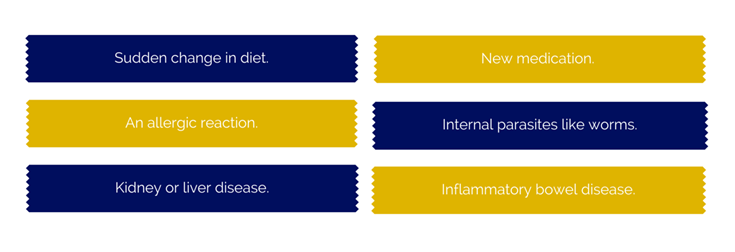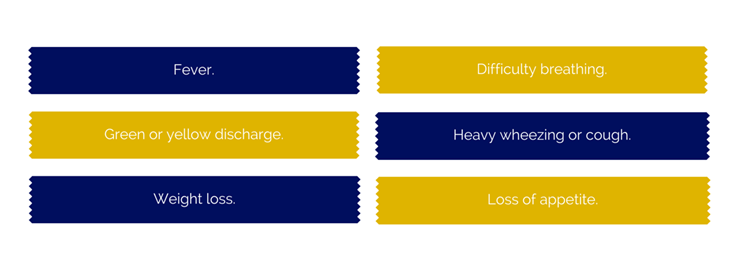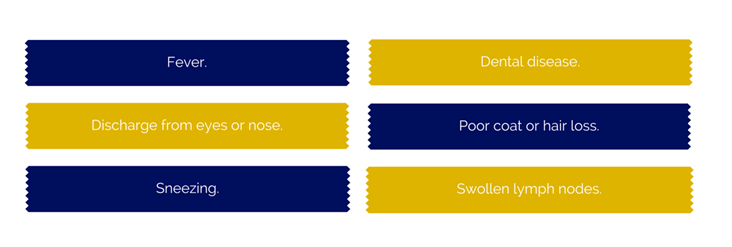Top 10 Most Common Health Problems For Cats

As a caring pet insurance company, we know a thing or two about cats and what conditions they’re most likely to develop.
Unfortunately, cats get sick. It doesn’t matter how well you take care of your cat, they’re bound to get sick at least once or twice during their lifetime.

Most of the time it’ll be something easily treatable like fleas or a minor ear infection.
But sometimes cats will become seriously ill and it’s a good idea to know what you’re in for. Whether it’s because of a virus, infection, or some kind of disease,
Most conditions can be medicated or otherwise corrected before any real harm is done—catching them early is the key. We’ve put together a list of the ten most common health problems for cats, what they mean and how they can be fixed.
10. Kidney Disease
Kidney disease is a very serious threat to a cat’s health. If left untreated, failing kidneys, which play an essential role in your cat’s day-to-day functions, can even result in death.
Older cats and cats that are allowed to go outside are far more likely to develop kidney disease than young indoor animals.
Kidney disease occurs when 75% or more of the kidney’s tissue is failing to carry out its filtering function—separating toxins from the body.
Here are some symptoms to look out for:

9. Diarrhoea
We all know what diarrhea is, but what does it mean for cats? If your cat is suffering from a loose, watery or inconsistent stool, then they have diarrhea symptoms.
Reasons for diarrhea in cats vary wildly, but here are some common causes:

If your cat has diarrhoea there’s no need to panic—often the cause will be a simple one like a small bacterial infection or a dairy intolerance. If it continues for several days, however, it’s a good idea to see the vet for a check-up.
8. Dental Disease
Periodontal or ‘gum disease’ in cats is a common problem and occurs when plaque (which is a bacteria) grows on the surface of the teeth.
If plaque isn’t cleaned from the cat’s teeth, then it will turn to tartar (hard yellow or brown deposits). Tartar is very difficult to remove and, it gets under the cat’s gum, can cause serious infection. If this infection gets out of hand, your cat could lose teeth.
A cat’s diet can be a factor in the development of periodontal disease in cats. Always try to give your cat a mixture of dry and canned food. Dry food is a good way to help clean the teeth.
7. Broken Bones
Especially common in outdoor cats, fractures or broken bones can happen easily and may be difficult to identify. It’s quite common for cats to be bowled over by passing cars or to fall from rooftops or trees when distracted or startled.
They can’t tell you that they’re in pain. Signs to look out for include moaning or howling more often, louder and for longer than usual, loss of appetite, and swelling in the affected area. If your cat moans when touched gently, they are likely in pain.

If you feel your cat may have a broken bone, it’s essential you take them to the vet for a check-up as soon as possible. They will be in quite a lot of pain.
6. Sneezing
This is something we’re often asked. When a cat is sneezing it can mean a number of different things.
Most of the time it will be an allergic reaction to something, or they may have simply gotten a tickle in their nostril. Your cat will need care, however, if they show these symptoms as well:

5. Heart Worm
This was a very common parasite affecting both dogs and cats, however modern vaccines prevent most cases from occurring in Australia.
Heartworms are parasites that grow inside the cat’s heart and lungs, eventually filling the organs up and choking them up over time.
The worms can still be found all over Australia and can kill if left untreated. For more information, see our heartworm guide.
4. Fleas
Fleas, as you’re probably already aware, is another one of things that nearly every cat will get during a lifetime. In fact, studies show that most cats will be born with fleas or have them for the first time shortly after their birth.
They can be knocked over quite easily with the right medication and you can find a number of products for sale at your local pet store.

3. FIV
Feline Immunodeficiency Virus (FIV) is a virus, similar to HIV in humans, that attacks the immune system of the cat and renders them more susceptible to a range of other illnesses and infections.
FIV cannot be cured but it can be controlled. Cats diagnosed with FIV will require treatment for the rest of their lives to help them fight off infection.
Symptoms of FIV include:

2. Cancer
Unfortunately, just like us, cats will often develop cancers as they get older and their bodies begin to show their age.
Cats can suffer from all the types of cancers we do, such as lymphoma, melanoma, breast cancer and even prostate cancer to name a few.
Treating cancer can take the form of surgeries, chemotherapy or radiation treatment. Like all cancers, catching it early is the most important thing, so look out for any unusual lumps or spots on your cat’s skin, ears and eyes.
1. Obesity
Another common condition amongst Australian cats and one that often isn’t noticed or taken seriously is obesity.

If your cat is obese then they risk developing all sorts of related conditions such as heart disease, kidney disease, arthritis and many more. Indoor cats are especially prone to developing weight problems and diet should be monitored properly.
Speak with your vet if you think your cat may be overweight. Treating your cat to their favourite meals may get them purring, but their health, at the end of the day, is the most important thing.


Comments
Post a Comment